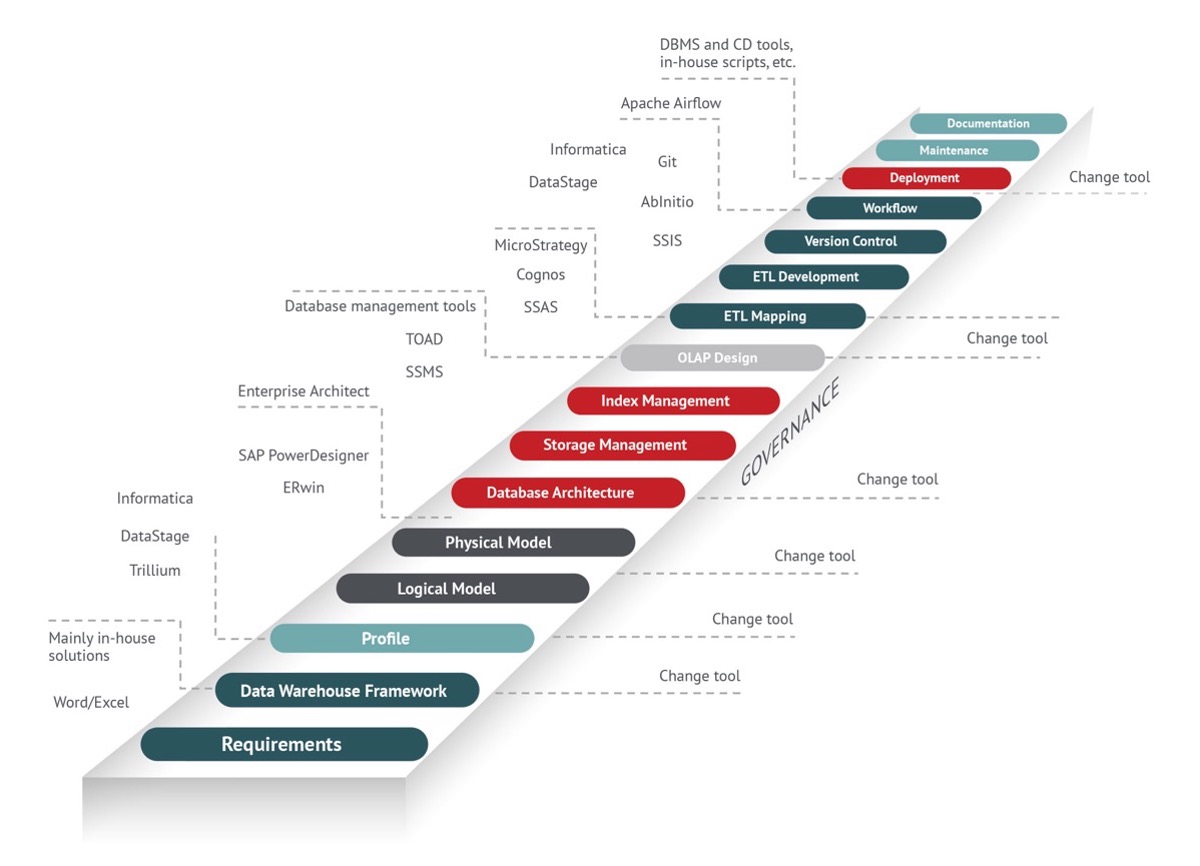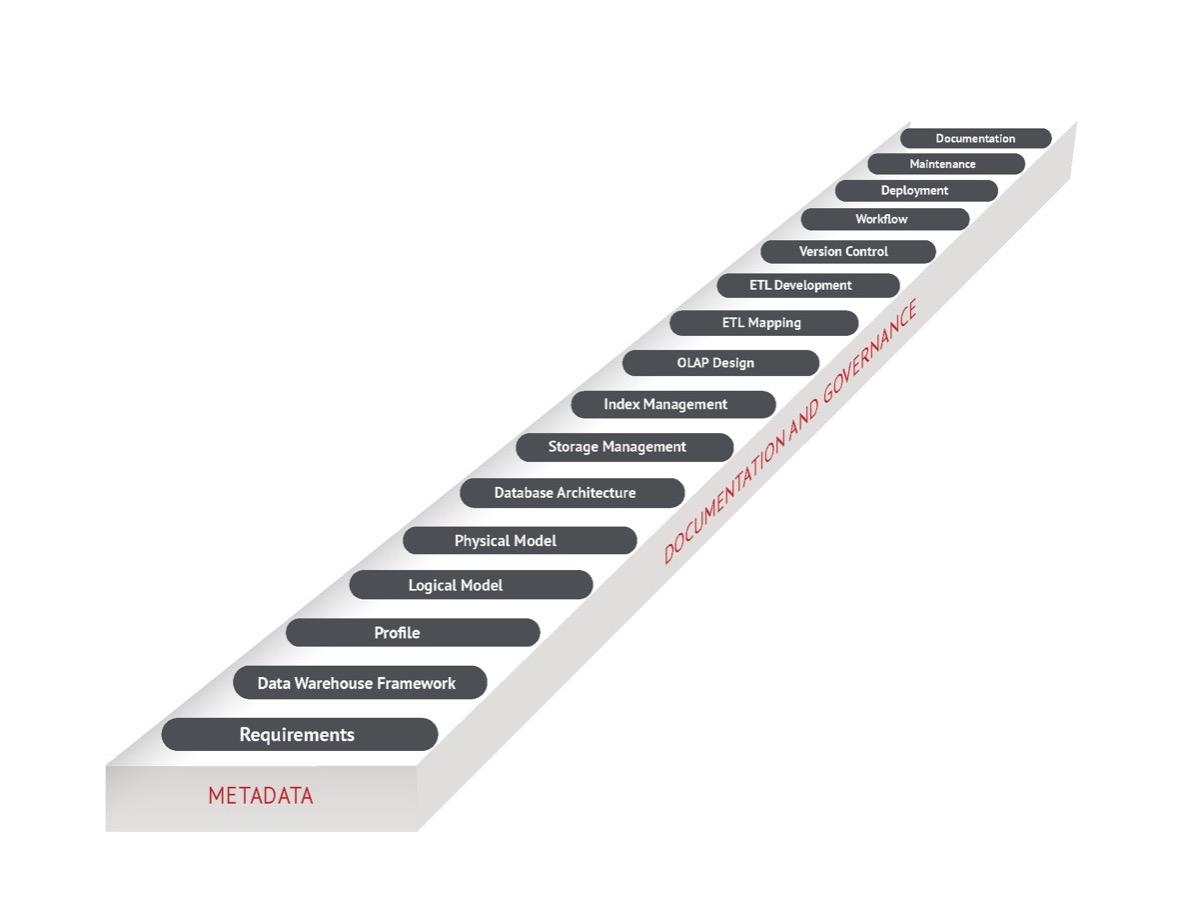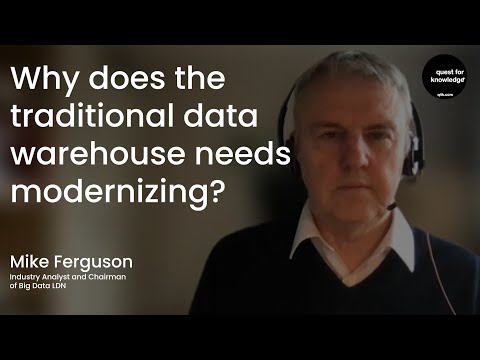What is Data Warehouse Automation and What Does It Mean for Your Analytics Team?
Why Data Warehouse Automation is Now?
Many organisations operate more than one data warehouse and experience the pain, the cost and the pressure from the business to keep up with rapidly changing business requirements and data sources.
The challenges of modern data warehousing are being further compounded by advances in data strategy, data architecture and data management. If you are embarking on cloud migration projects or starting to handle real-time streaming data, the challenges can quickly overwhelm a team's capacity to handle them manually. This is where Data Warehouse Automation, or more broadly categorized as data infrastructure automation, becomes crucial to achieving modernization and agility goals.
What Exactly is Data Warehouse Automation?
In simple terms, Data Warehouse Automation is the process of automating data warehouse development, deployment, and maintenance. This process replaces traditional manual methods with automated ones, speeding up the entire data warehousing process and eliminating manual coding. This is accomplished by utilizing templates, capturing metadata, and automating repetitive tasks, such as hand-coding functionality in dimensional modeling or in data vault models.
Data Warehouse Automation allows organizations to build data warehouses in a fraction of the time it would take with manual processes. It also minimizes the risk of human errors, as the automation process eliminates the chances of mistakes in coding. Additionally, Data Warehouse Automation facilitates increased agility and scalability of data warehouses, allowing companies to quickly respond to evolving business requirements. Modifications and enhancements can be carried out faster and easier due to the existence of common standards and development processes.
Data warehouse automation adds an effective governance layer on the development process: the templates can be centrally managed to avoid chaos.
Automate the Entire Data Warehousing Lifecycle
Data Warehouse Automation goes beyond automating the warehouse design and build processes. It covers the entire lifecycle of data warehousing, from planning, analysis, and design through development and extending into operations, maintenance, change management and documentation. It has the capability to easily conform to your data integration architecture and can automate traditional hub-and-spoke data warehouses, data marts, data vaults, and data lakes.
Automation has transformed the approach about building, maintaining and evolving data warehouses. The widely accepted best practice of thorough upfront analysis, design, and modeling may be set aside as the mindset shifts from "get it right the first time" to "develop quickly and iterate frequently."
Traditional vs. Automated Data Warehouse Development
The Traditional Approach
The image below shows the traditional data warehouse development process, from requirements through to logical and physical modelling, architecture, storage and index management, ETL mapping, deployment and eventually maintenance and documentation. Each step has its own tool and its own team, and usually takes from between six weeks and six months or more to complete. Once you get to the end it is very complicated to make retrospective changes. At each step you are changing people and tools. After one team has finished with the code it passes it onto the next, which can often lead to human error and confusion if the completed work and instructions are not explained properly or sufficiently documented.

The Automated Approach
In the image below, the whole process and all its steps are managed in one toolset/framework and performed by the same team (often the same person). Using a common software means every act is taken according to the same standards and conventions. Once connected to your data ecosystem, the Data Automation software quickly scopes all data sources to give a profile of the data available, its quality, location and so on. Prototype architectures can then be spun up using this data in under an hour, and show it to the colleague(s) who requested it and check all requirements are understood before the build phase starts with no misunderstandings or misinterpretations.

What Data Warehouse Automation Means to Your Data Warehouse / Business Intelligence Team?
With data warehouse automation, your DW/BI staff no longer needs to produce quick fixes that lead to data inconsistency, drop braindead causing manual coding, avoid shadow IT and endless discussions with the business about lagging deliveries. Instead, they will focus on optimum modelling, data quality and other, more exciting stuff that has been neglected in the process.
The generation of any data warehouse model: E/R, data vault and Star schema as well as the source to target chain of the data flow by generating the ETL will free them from coding. This full lifecycle management is made possible by built-in methodologies and best practices. The metadata driven approach facilitates documentation and lineage. In conclusion: reduce project risk, cost and delivery time so you can focus on quality, relevance and user friendly delivery of information to the business.
What the Business Will Like About Data Warehouse Automation?
Data warehouse automation can give managers more visibility into the data warehousing process. This can help them make better decisions about resource allocation, project timelines, and budgeting. For analysts, data warehouse automation can provide them with faster access to data, enabling them to make more informed decisions. Data warehouse automation can also help analysts focus more on analyzing data than spending time on data collection and preparation. In addition, data warehouse automation provides full lineage, so analysts and users of business intelligence products can understand exactly where the data came from.




